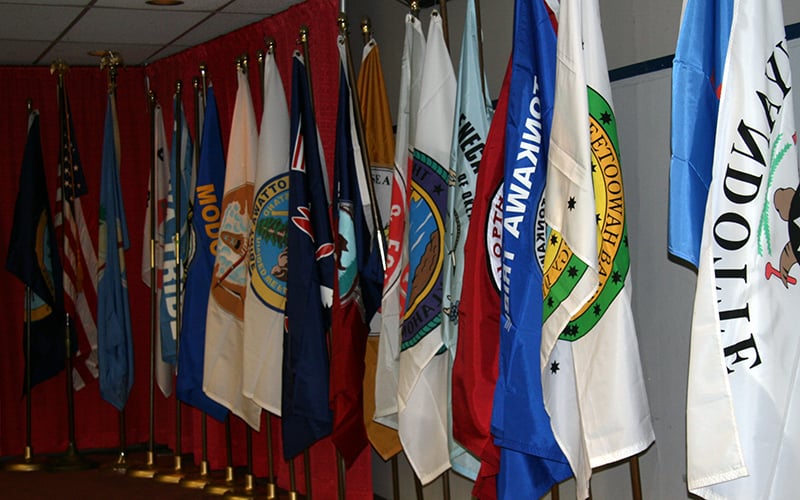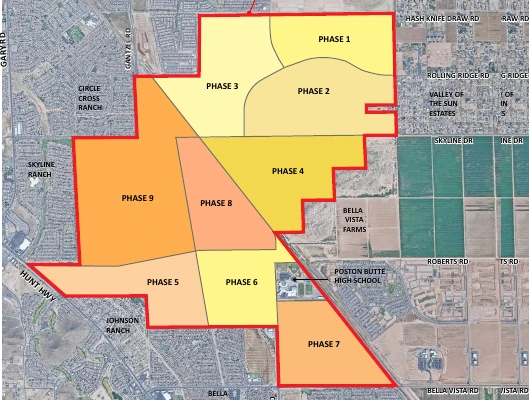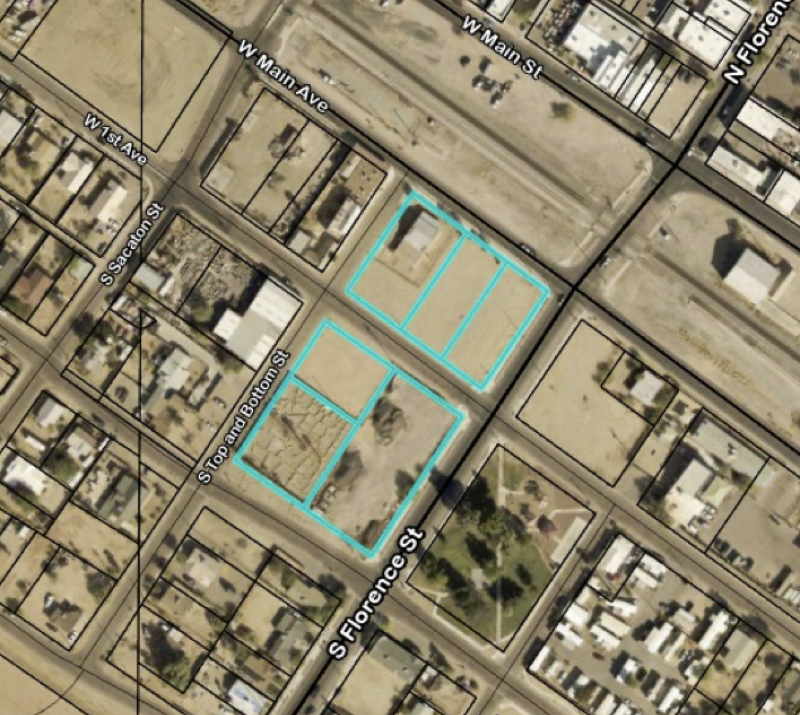
For some tribal leaders and lawmakers who work with tribes, the fact that the Bureau of Indian Affairs, the Bureau of Indian Education and the Indian Health Service were put on a GAO high-risk list because of their performance was not surprising. (Photo by Pioneer Library System/Creative Commons)
 ederal agencies that oversee tribal schools, lands and health care still suffer from weak leadership, a lack of oversight and mismanaged resources, despite nearly a decade of prodding from the Government Accountability Office. That lack of progress landed the Bureau of Indian Affairs, the Bureau of Indian Education and Indian Health Services on the GAO’s “high-risk list” earlier this year, and will be the focus of a Senate hearing Wednesday on the agencies’ ongoing shortcomings. The problems cited by GAO are not new – auditors have made at least 41 recommendations in recent years, 39 of which had not been resolved by February when the GAO added the agencies to its priority list. And they are not new to tribal officials and the people who work with them.
ederal agencies that oversee tribal schools, lands and health care still suffer from weak leadership, a lack of oversight and mismanaged resources, despite nearly a decade of prodding from the Government Accountability Office. That lack of progress landed the Bureau of Indian Affairs, the Bureau of Indian Education and Indian Health Services on the GAO’s “high-risk list” earlier this year, and will be the focus of a Senate hearing Wednesday on the agencies’ ongoing shortcomings. The problems cited by GAO are not new – auditors have made at least 41 recommendations in recent years, 39 of which had not been resolved by February when the GAO added the agencies to its priority list. And they are not new to tribal officials and the people who work with them.
“This is not new news to us,” said Ahniwake Rose, executive director of the National Indian Education Association, who pointed to decades of problems with education in Indian Country.
“These were generations of neglect of our BIE system, and so it does not surprise us at all … to see our schools and this overall system within this high-risk report,” Rose said.
Those concerns were echoed by Rep. Tom O’Halleran, D-Sedona, whose district includes several of Arizona’s tribes and much of its reservation land.
“Obviously, something’s going wrong,” O’Halleran said. “We can’t keep any teachers employed, we can’t keep any doctors on the reservations. This is all known, and yet, here we sit with the same thing going on year after year, decade after decade.”
Despite that recurring lack of progress, the three tribal agencies had never been on the GAO’s list before this year.
‘Obviously, something’s going wrong’
The list, created in 1990, is updated every two years, with the start of a new Congress. It now targets 34 areas of government – the three tribal agencies account for one area – that the GAO has determined are especially vulnerable “to fraud, waste, abuse, and mismanagement or are most in need of transformation.”
Kathleen King, director of healthcare for the GAO, was involved in the decision to add IHS to the list.
“We’ve been working on it over time and we’ve built up a body of work and continued to see issues and problems and continued to see a lack of action,” King said.
Neither the BIA nor the BIE responded to multiple requests for comment on the GAO listing. IHS said in a statement that it agrees with nearly all the GAO’s recommendations and will work with other agencies, Congress and tribal leaders to make improvements – improvements they expect to address by the end of this year.
King agreed that IHS has recently addressed some concerns, including patient wait times, but that other problems appear to have been ignored for years.
“There are recommendations that they say that they’ve agreed with that are several years old, but actions have not been taken or completed,” she said. “They certainly haven’t been as responsive as we would have liked them to be.”
But the agencies shouldn’t shoulder all the blame, said Jacob Moore, assistant vice president of tribal relations at Arizona State University.
Moore, who has worked in intergovernmental affairs with Arizona tribes, said the federal agencies are the ones “in the trenches and they’re doing the work.”
They are “the unsung heroes because those are difficult positions to be in,” he said.
“Ultimately what it comes down to is the support from Congress or lack of it,” Moore said. “Really, there’s not much more that the tribes can do in terms of reinforcing that relationship, unless Congress and the administration decides that they want to fulfill their obligation to tribal communities.”
Funding, leadership lacking
A lack of sufficient funding is one area out of the control of the agencies that was cited by the GAO, which also said “sustained congressional attention” to the agencies would help bring about change.
But other problems – including a lack of leadership and cumbersome bureaucracy that has stifled tribal economic development – were laid directly at the feet of the agencies.
Frank Rusco, director of the GAO’s natural resources and environment team, pointed to energy resources on tribal lands, where BIA has “just done a terrible job” of oversight.
Rusco said one tribe had to wait several years for approval of a road so they could develop oil and gas on their land, an approval that would typically take weeks if done by a state or the Bureau of Land Management. By the time the tribe’s road was approved, oil prices had fallen, costing the tribe potential revenue.
“Because BIA has not tooled up enough to handle the kind of activity that has been happening in recent years, the time it’s taking to approve some of these things is costing tribes opportunities that they otherwise would have for economic development,” Rusco said. “It puts the tribes at a great disadvantage relative to even neighbors that are in the same proximity, with the same energy resources that are much easier to develop.”
One of the biggest problems cited by the GAO directors and Native leaders is a lack of strong leadership in the agencies – which also happens to be the first on the list of requirements to get off the GAO’s high-risk list.
“That is something that is at play when you’re looking to address significant concerns,” said Melissa Emrey-Arras, director of the education, workforce, and income security team at the GAO.
Leadership positions at all three agencies have seen a lot of turnover in recent years, a period during which one acting BIE director was removed after an investigation into improper hiring practices.
King noted that at IHS, “Not only has there been vacancies at lower levels, but there’s been a vacancy at the top of the organization.”
“When you don’t have permanent leadership, I think it makes it harder to carry out your mission,” King said.
O’Halleran said agency leadership will have to fight for the funding to do their jobs, particularly under the current administration.
“If we’re talking about how to bring about change, it’s very hard to do without funding,” he said. “You can’t fix these legacy issues … by just continuing down the same path as you did before. It’s just getting worse with the type of proposed cuts from the administration’s budget recommendations.
“The bureaus have to fight for the money,” O’Halleran said.
But Moore said it’s unrealistic to expect agency heads to challenge the administration’s budget.
“As political appointees, they have to basically stay in line with the administration,” he said.
Keeping tribal officials involved
Despite the challenges in the budget and the ongoing problems cataloged in the GAO reports, Rose tries to hold out hope.
“While we were really disappointed in the federal budget that was proposed by the president, we have a lot of faith that Congress is going to act appropriately and help us to restore that, because no country’s budget should … be balanced off the backs of students,” she said.
Whatever changes are made, she said, need to be made in consultation with the tribes themselves.
“No one knows our communities like we do,” Rose said. “And so, to go through and start a process without even including the people which you’re serving in a meaningful way, it’s going to fail. You’re setting yourself up for failure.”
John Dossett, general counsel for the National Congress of American Indians, said that tribal input is vital on land use, education any decision affecting the tribes.
“The goal is self-governance,” Dossett said, adding that the “tribe make its own decisions about how to lease land.”
Moore is not sure what the future holds, even with the release of the GAO report.
“There were certain commitments that were made and what this demonstrates is that the federal government simply hasn’t upheld its end of the deal,” Moore said of the report. “It will be an interesting era in terms of the new administration.”








